August 19, 2022
This is one of those drinks that when you look at the ingredient list your first thought is probably, “whaaaaa?” as the four fine products used here don’t necessarily seem to match in that first moment. Partially cause anisette, even the so-good-it’s-hard-to-put-into-words Meletti anisette, can be such a strong personality that it may not seem a match with, say, Lillet’s delicate wine-aperitif tones. And maybe not even a match with a staunch British gin such as Boodles, our heaviest player here (in ounces!), made of British wheat and leaning classically towards juniper, coriander, angelica. By the by, I love all three of those ingredients, and you probably do, too, so maybe I’m making too much of the “odd trio” angle, but hey, they didn’t at first take to each other as well as I’d hoped. Until adding the robust Peychaud’s Whiskey Barrel Aged bitters, which somehow (bitters does tend to make it better), brought every other ingredient into the playing field nicely for me. After a little testing of amounts and some ritual incantations and normal stuffs like that. Short story: trust me! This is a good cocktail.
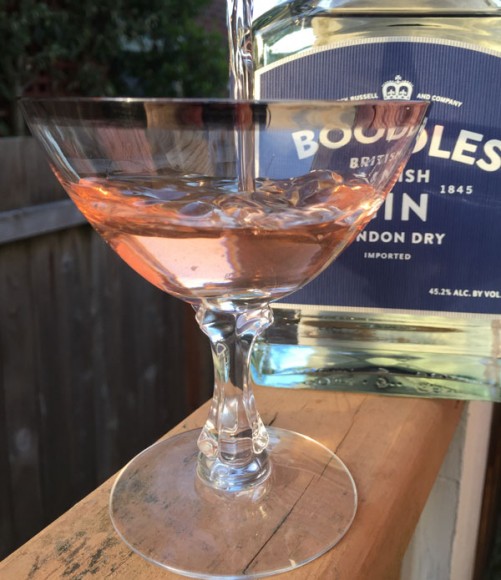
An Elusive Memory
Cracked ice
1-1/2 ounces Boodles gin
1/2 ounce Meletti anisette
1/2 ounce Lillet
2 dashes Peychaud’s Whiskey Barrel Aged bitters
1. Fill a cocktail shaker or mixing glass halfway full with cracked ice. Add everything. Stir well.
2. Strain into a cocktail shaker. Raise a toast in my direction (I mean, why not? I appreciate it). Drink up.
Tags: An Elusive Memory, anisette, bitters, Boodles gin, cocktail, Cocktail Recipes, Friday Night Cocktail, Gin, Lillet, Meletti Anisette, Peychaud bitters, Peychaud’s Whiskey Barrel Aged bitters, What I’m Drinking
Posted in: bitters, Cocktail Recipes, Gin, Liqueurs, Recipes, What I'm Drinking
November 17, 2017
This is not a spelling error (not that I don’t make those a lot); if you didn’t know, there really is a drink called The Zazarac. It wants you to know that it, while not renowned and legendary and all that, it in its own way is also worthy of your attention, much like its very distant cousin (though maybe not the same amount of attention, admittedly). It has a rare rye and rum combo, some friendly supporting players in anisette (go Meletti) and absinthe and Angostura and orange bitters (go Regan’s), and takes the edges off with a splash of simple, and tops things with a twist. Will it have you stopping your Sazerac consumption? Nope. But that doesn’t mean you shouldn’t give it a sip.
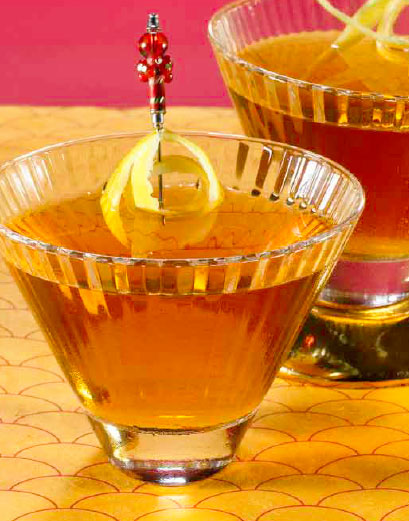
The Zazarac, from Dark Spirits
Ice cubes
1-1/2 ounces rye
3/4 ounce white rum
3/4 ounce anisette
3/4 ounce simple syrup
1/2 ounce absinthe
1 dash Angostura bitters
1 dash Regan’s orange bitters
Lemon twist, for garnish
1. Fill a cocktail shaker halfway full with ice cubes. Add the rye, rum, anisette, syrup, absinthe, and both bitters. Shake well.
2. Strain into a large cocktail glass. Garnish with the twist and a nod to all the lesser-known family members.
Tags: absinthe, Angostura bitters, anisette, cocktail recipe, Cocktail Recipes, Dark Spirits, Friday Night Cocktail, orange bitters, Rye, simple syrup, The Zazarac, What I’m Drinking, white rum
Posted in: absinthe, bitters, Cocktail Recipes, Dark Spirits, Liqueurs, Recipes, Rum, Rye
June 16, 2017
It’s morning, and nearly the beginning of summer, which means I (as I always do) am going to sit myself down and have a Baltimore Bracer and read Thomas Osborne Davis’ “The Sack of Baltimore:”
The summer sun is falling soft on Carbery’s hundred isles,
The summer sun is gleaming still through Gabriel’s rough defiles;
Old Innisherkin’s crumbled fane looks like a moulting bird,
And in a calm and sleepy swell the ocean tide is heard:
The hookers lie upon the beach; the children cease their play;
The gossips leave the little inn; the households kneel to pray;
And full of love, and peace, and rest, its daily labor o’er,
Upon that cosy creek there lay the town of Baltimore.
Well, at least that first stanza. Hmm, I sorta think I may be reading at least one word differently than he meant it.
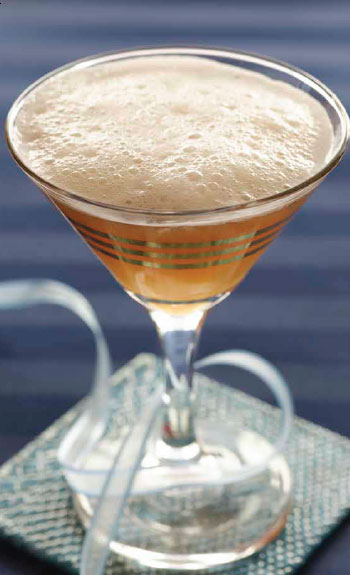 Baltimore Bracer
Baltimore Bracer
Cracked ice
1-1/2 ounces brandy
1-1/2 ounces anisette
1 egg white, preferably organic
1. Fill a cocktail shaker halfway full with cracked ice. Add the brandy, anisette, and egg white. Shake well.
2. Strain into a cocktail glass.
Tags: anisette, Baltimore Bracer, Brandy, cocktail recipe, Cocktail Recipes, egg white, egg whites are good, Friday Night Cocktail, hookers lie upon the beach, morning drinks, What I’m Drinking
Posted in: Brandy, Cocktail Recipes, Ginger Bliss and the Violet Fizz, Liqueurs, Recipes, What I'm Drinking
June 12, 2015
During the summer months (and really, even though we’re not officially in summer, let’s call it summer, okay? June feels like summer to me. Go with it), it’s tempting to have a drink called The Snowball – right? Right. But, there are so many! There’s the one with advocaat (the liqueur made from egg, sugar, and brandy) and sparkling lemonade. There’s another with brandy, simple syrup, an egg, and ginger ale. Both have their moments. But today, this particular day, I’m going with the below, which is wonderful on an early summer’s night, and of which famed drink explorer Harry Craddock said, around 1930, “This is women’s work.” Hah, I’ll show you Harry.
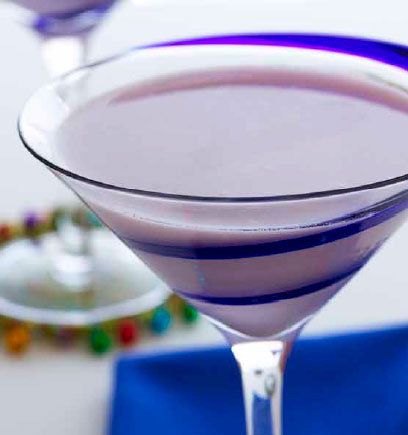
The Snowball, with the recipe from Ginger Bliss and the Violet Fizz
Ice cubes
2 ounces gin
1/2 ounce crème de violette
1/2 ounce white crème de menthe
1/2 ounce anisette
1/2 ounce heavy cream
1. Fill a cocktail shaker halfway full with ice cubes. Add the gin, crème de violette, crème de menthe, anisette, and cream to a cocktail shaker. Shake well.
2. Strain into a cocktail glass.
Tags: anisette, cocktail recipe, Cocktail Recipes, Crème de menthe, Crème de Violette, Friday Night Cocktail, Gin, The Snowball, What I'm Drinking
Posted in: Cocktail Recipes, Gin, Ginger Bliss and the Violet Fizz, Liqueurs, Recipes, What I'm Drinking
November 25, 2014
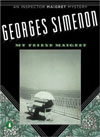 Earlier this month, I admitted to having only a tenuous relationship (until recently) with Edmund Crispin and his fictional English detective Gervase Fen. Since I’m in the admitting mood (hah, no, I’m not admitting that, yet), I should also say that until recently I hadn’t read any books featuring an even more famous detective, Inspector Maigret of the Paris PD, as written by George Simenon in 74 novels and 28 short stories. Whoa! I don’t even have the cat vs. dog excuse in this case. But recently I picked up three Maigret novels to see what I was missing, and completely dug them – a bit dark, a bit French, a bit rainy for some reason, but full of murder, mysteriousness, and a lot of food and drink. They do take place in France, after all. And I can’t wait to read more, especially when they contain Cocktail Talk like the below:
Earlier this month, I admitted to having only a tenuous relationship (until recently) with Edmund Crispin and his fictional English detective Gervase Fen. Since I’m in the admitting mood (hah, no, I’m not admitting that, yet), I should also say that until recently I hadn’t read any books featuring an even more famous detective, Inspector Maigret of the Paris PD, as written by George Simenon in 74 novels and 28 short stories. Whoa! I don’t even have the cat vs. dog excuse in this case. But recently I picked up three Maigret novels to see what I was missing, and completely dug them – a bit dark, a bit French, a bit rainy for some reason, but full of murder, mysteriousness, and a lot of food and drink. They do take place in France, after all. And I can’t wait to read more, especially when they contain Cocktail Talk like the below:
He had drunk only one glass of Champagne. Then rest of time he had drunk mostly wine, then, God knows why, anisette.
Who had ordered anisette? Oh yes, it was the dentist. A retired dentist to be precise, whose name escaped him. Another phenomenon. There was nothing but phenomenon on the island.
—My Friend Maigret, George Simenon
September 13, 2013
Holy Toledo! Everyone who’s been holding your breath can now exhale – the new season of the Cocktail to Cocktail Hour is finally upon us. They (those bastardos) said it couldn’t be done, said that the Cocktail to Cocktail Hour was too radicool, too awesome, too tasty for modern T.V. – but they were wrong. To prove it, the first episode of the new season, where I teach you have to make the Kick-Off, a combination of gin, dry vermouth, anisette, Benedictine, and Angostura. Get to it, y’all!
Tags: Angostura bitters, anisette, Benedictine, cocktail recipe, Cocktail Recipes, Cocktail to Cocktail Hour, Cocktail video, Cocktail Videos, dry vermouth, Friday Night Cocktail, Gin, Ginger Bliss and the Violet Fizz, What I'm Drinking
Posted in: bitters, Cocktail Recipes, Cocktail to Cocktail Hour, Cocktail Videos, Gin, Ginger Bliss and the Violet Fizz, Italy, Liqueurs, Recipes, What I'm Drinking
August 30, 2013
A week ago today, I put up a Friday night drink called the Portofino, which was a drink I made for my mother’s 75th birthday party. One of the other drinks (there were three) was the Marguerite. As mentioned in that earlier post, I was slightly angling the drinks the Italian way, and the Italian connection here is anisette – specifically Meletti anisette, which is one of the finest sippers I know. I blogged more about it on a specific Meletti post, so go catch up if you missed it. Then, when back, make this drink. It has an interesting balance, as it’s equal parts gin and vermouth, but the end result is awfully wonderful (oh, the recipe is from Ginger Bliss and the Violet Fizz, if you wondered).
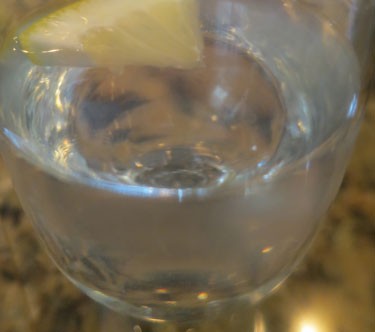
The Marguerite
Cracked ice
1-1/4 ounces gin
1-1/4 ounces dry vermouth
1/4 ounce anisette
Thin lemon slice for garnish
1. Fill a cocktail shaker or mixing glass halfway full with cracked ice. Add the gin, vermouth, and anisette. Stir well.
2. Strain the mix into a cocktail glass or comparable glass
3. Give the lemon slice a small squeeze over the glass then drop it in.
Tags: anisette, cocktail recipe, Cocktail Recipes, dry vermouth, Friday Night Cocktail, Gin, Ginger Bliss and the Violet Fizz, Marguerite cocktail, What I'm Drinking
Posted in: Cocktail Recipes, Gin, Ginger Bliss and the Violet Fizz, Liqueurs, Recipes, vermouth, What I'm Drinking
September 14, 2012
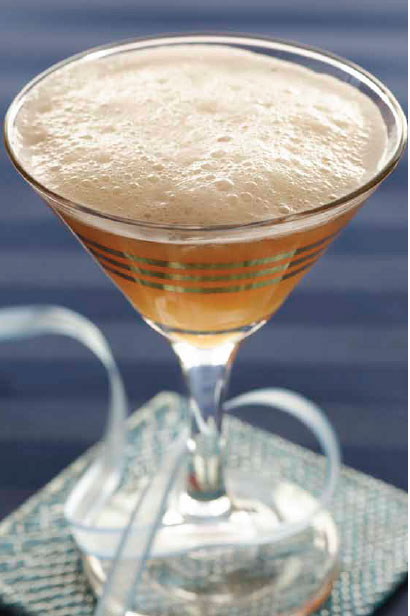 Oh golly, I love this drink. My love reaches such a magnitude that I made a Baltimore Bracer cocktail video already, but I still wanted to post the drink again. It’s just the ideal combination of tough name, sweet-in-a-good-way-meaning-with-a-kick taste, and amazing mouthfeel thanks to the egg white. I’m not even saying any more (except that the recipe’s from Ginger Bliss and the Violet Fizz). Just have the drink already. Or you’ll be sorry.*
Oh golly, I love this drink. My love reaches such a magnitude that I made a Baltimore Bracer cocktail video already, but I still wanted to post the drink again. It’s just the ideal combination of tough name, sweet-in-a-good-way-meaning-with-a-kick taste, and amazing mouthfeel thanks to the egg white. I’m not even saying any more (except that the recipe’s from Ginger Bliss and the Violet Fizz). Just have the drink already. Or you’ll be sorry.*
Cracked ice
1-1/2 ounces brandy
1-1/2 ounces anisette
1 egg white, preferably organic
1. Fill a cocktail shaker halfway full with cracked ice. Add the brandy, anisette, and egg white. Shake well.
2. Strain into a cocktail glass.
*Not sorry cause I’m going to get all Bruce Campbell on you or anything. I’m not really that tough. Just sorry cause you’ll be missing a dandy drink.
Tags: anisette, Baltimore Bracer, Brandy, Bruce Campbell, cocktail recipe, Cocktail Recipes, Friday Night Cocktail, Ginger Bliss and the Violet Fizz, What I'm Drinking
Posted in: Brandy, Ginger Bliss and the Violet Fizz, Liqueurs, Recipes, What I'm Drinking




























